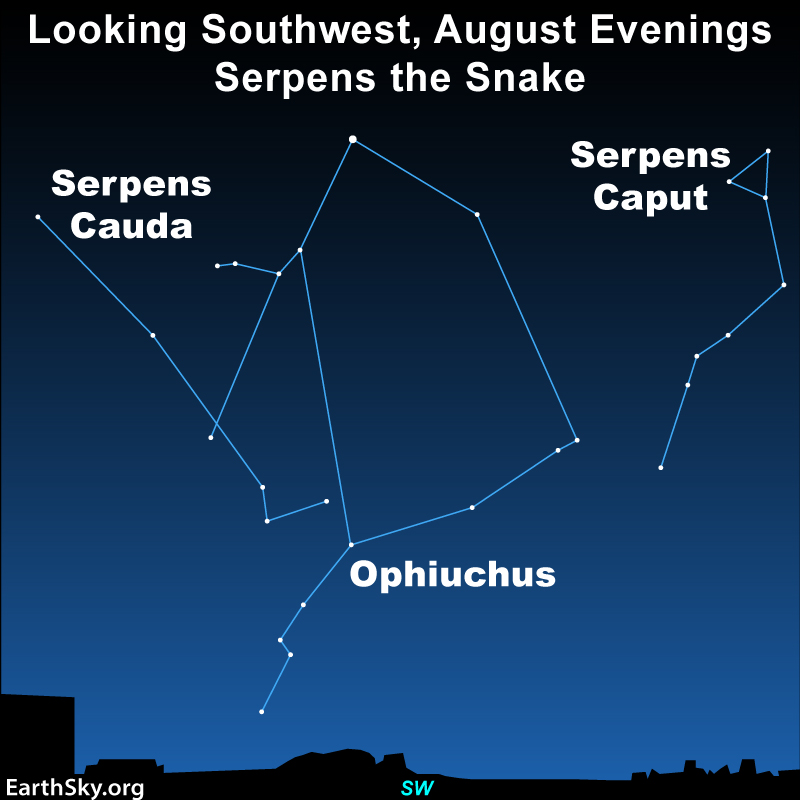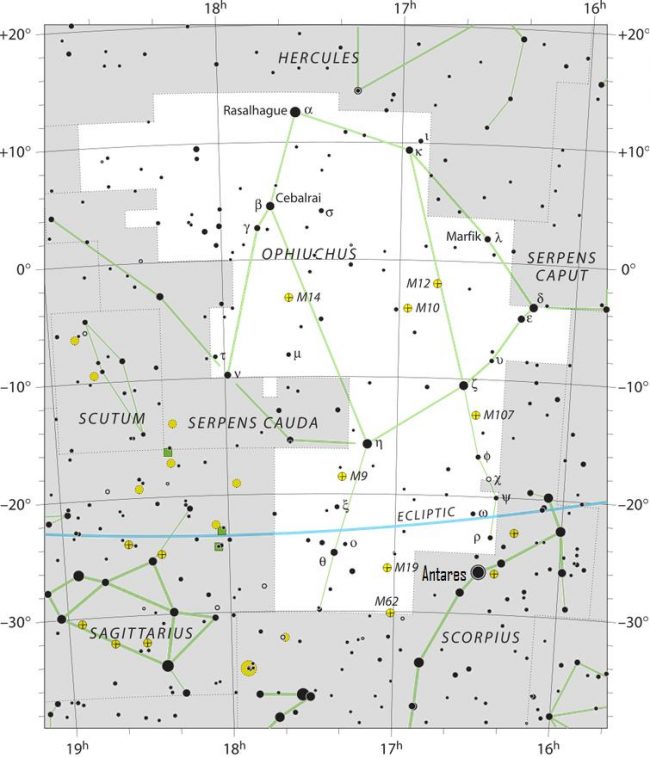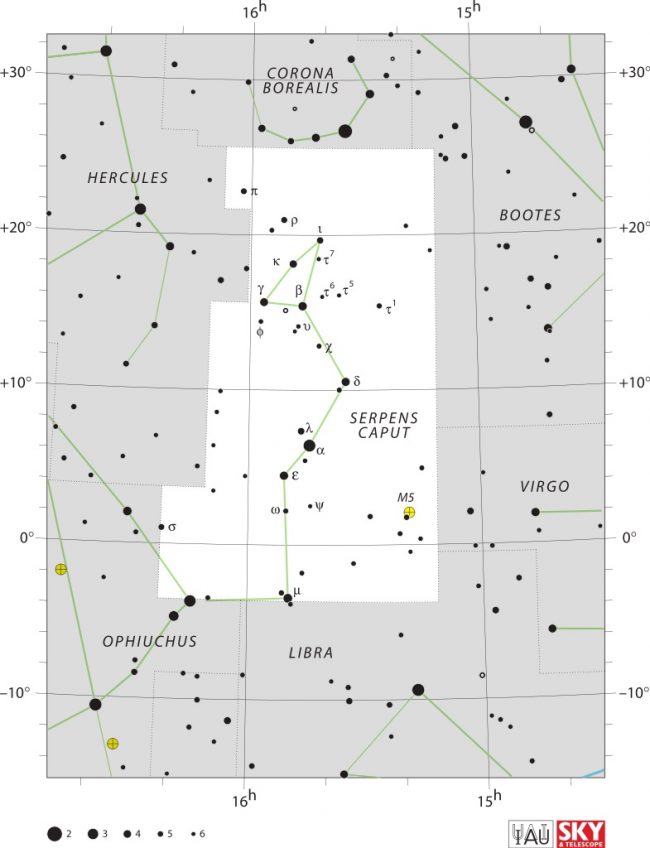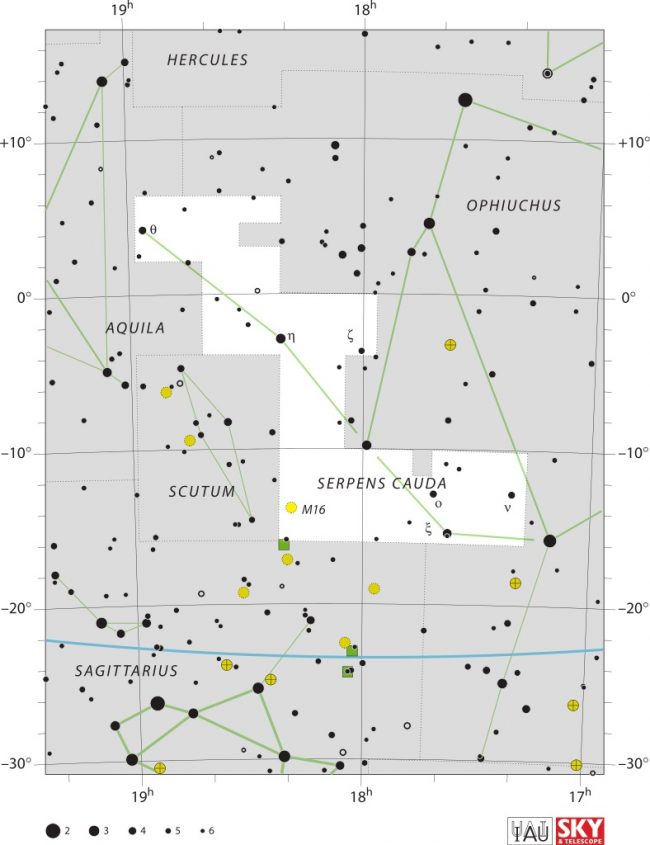
You’ve probably heard of Ophiuchus the Serpent Bearer, sometimes called the 13th constellation of the zodiac. Ophiuchus is a snake handler, but have you ever seen the snake he’s holding? On the eastern side of Ophiuchus lies Serpens Cauda, the Serpent’s Tail. And on the western half is Serpens Caput, the Serpent’s Head. In fact, it’s the only constellation out of 88 that’s broken into two pieces.

Locating Serpens the Snake
August is a good month to track down Serpens. In the Northern Hemisphere, look toward the southern horizon. The ecliptic – or path of the sun, moon and planets – passes through the bottom of Ophiuchus. He reminds me a bit of a tin man with a pointy hat. Then look to the east side of Ophiuchus for a string of stars representing Serpens Cauda, the serpent’s tail. And then, on the west side is a string of stars culminating in a little triangle for the serpent’s head; that’s Serpens Caput.
In essence, Ophiuchus got the brighter stars in this region of sky, with Serpens consisting of a trail of fainter stars. Serpens’ brightest star is Alpha Serpentis, or Unukalhai, in Serpens Caput. However, it does not mark the head of the snake. In fact, Unukalhai, means neck of the snake. The star occasionally goes by the nickname Cor Serpentis, for heart of the serpent. Unukalhai is magnitude 2.63 and lies 74 light-years away.


The Eagle Nebula in Serpens Cauda
By the way, the most famous object that Serpens contains is the Eagle Nebula. Also known as M16, the Eagle Nebula is in the southeastern corner of Serpens Cauda, about 12 degrees above the top of the Teapot asterism in Sagittarius the Archer. This star cluster with emission nebula shines at magnitude 6. So that means you can spot it in small telescopes or binoculars. The gas in the nebula forms pillar-like shapes and contains a stellar nursery, where new stars are forming about 7,000 light-years away from Earth.
Targets in Serpens Caput
The Head of the Serpent has a couple observing targets as well. A little less than eight degrees southwest of Alpha is the globular cluster M5. M5 is magnitude 5.8, easily spotted in a pair of binoculars. It lies about 24,500 light-years away.
Also, toward the top of Serpens Caput is a favorite target for deep-sky observers with larger scopes. NGC 6027 is a galaxy cluster with the name of Seyfert’s Sextet. And at magnitude 14.7, this gathering of six galaxies reveals itself only to the seasoned observer. Seyfert’s Sextext lies about 190 million light-years away.

Bottom line: Serpens the Snake is the only constellation cut in two. It consists of Serpens Cauda and Serpens Caput, the tail and the head.











